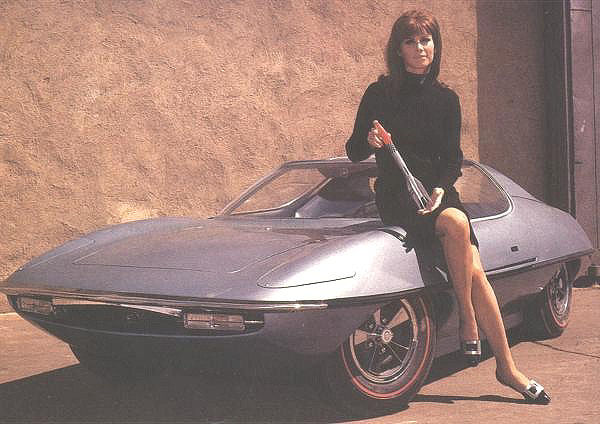Cars have been around for a long time and most of the newer drivers of today have never in their lives seen the greats of the 50s and 60s which were the stuff of dreams. We had such high hopes for the automotive industry. If you read any of the speculative fiction of the 50s and 60s we were going to be driving cars that could go 3-400 miles an hour and in some cases drive on land, air, and even under the sea. We were shown concept cars that should have been made production and weren’t. This and a never ending quest to stuff computers, WIFI, and movies into our vehicles made us forget what real driving is meant to be.
Today we will take a look at 20 of the cars that either were discontinued, in production, one of a kind specials, or experiment/fantasy vehicles that in this writer’s opinion should be brought back and put on the road again. Not so much as they are better, (in most cases they aren’t) but to provide us with alternatives to the same computer generated designs we get so impressed by.

1. Bradley GT
One of the flashiest cars ever was the Bradley GT. Based on a VOW chassis and a porch engine you had it all. A poor man’s sports car and something that looked great as well. What made this car unique was it came as a kit and you could build it yourself. This started a fad that resulted in a number of kit cars becoming popular and even today there are many that want to show their rebellion against the machine by building their own transportation.
Though the company filed for chapter 11 protection in 1981, their kits are still out there and fetch a pretty price if you can find them. The GT II was one of the first attempts to switch to all electric drive. Elon Musk was able to make a go of it with his Tesla based on a golf cart he found. However, if you look at the Tesla you see a Bradley GT waiting to come out.
With today’s technology, it is possible to make your own Bradley GT with a 3D printer. Instead of resin that the original was made from we have various lightweight composites that reduce weight and provide added strength and instead of the Porch engine a hybrid power plant could be implemented that gives the best of both electric and fossil fuels.
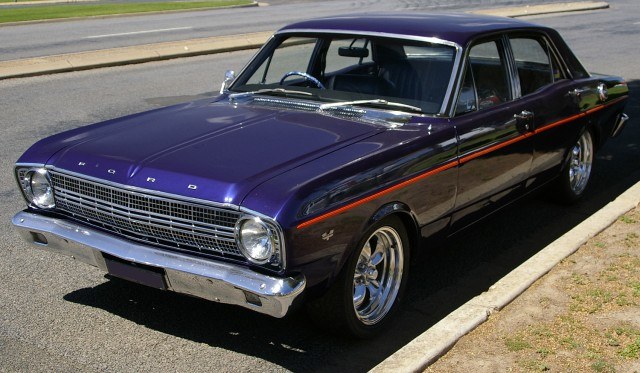
2. Ford Falcon
You don’t hear about the Falcon too much anymore. It was a workhorse and it was just a good reliable car use to get from point A to B. Nevertheless, it was a sedan that was affordable and while it didn’t have the flash of some of the other cars on the road; it lasted for 3 generations and 10 years of production. The Falcon was able to be placed successfully to deal with the sudden shift in the world market, became the first American Small car, and was able to weather the storm that saw the demise of the Nash, Hudson, DeSoto, and Packard.
The US was slow to shift to a smaller footprint and even the Falcon was considered a medium sized car. But, it saw a successful life abroad as it was manufactured in other countries. Its first year saw 500,000 drive off lots across the US and in its second year over a million were sold as well. This was unusual considering the inroads that Japan had made on the auto market America.
This car was one of the sauciest stories of America’s automotive turnaround and perhaps an updated version can do it again in the face of China and South Korean threatening to buy all the car companies left in the world.
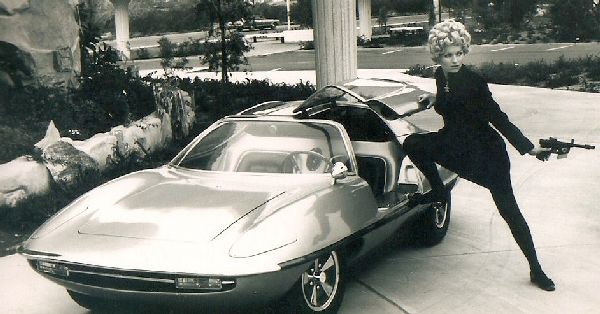
3. The Piranha
Just hearing the words “Man From Uncle” brings back fond memories of Illya and Napoleon and Mr. Waverly. Of course, the younger generation hasn’t a clue to what any of that means. David McCallum is currently “Ducky” on NCIS and has been a mainstay of the show since its first episode.
However even fewer remember the Piranha which was custom built for AMT models but given to the TV series as a publicity and create a plastic body car that had gullwing doors and all kind of spy gadgetry inside.
Since the body was, thermoplastic it is ripe for return with Kevlar or other carbon fiber composite, the corsair power plant could be redone to take advantage of the Tesla’s power plant, and you could see the sleek Piranha on the roads again.

4. The 1969 Dodge Charger Daytona
This was the limited edition of the dodge charger that was made to be the high-end performance vehicle to take on the Daytona raceway and such featured a front-end fairing on the nose that lent a jet aircraft’s look to an otherwise flat Front-end charger. It did win its first race though there had been a boycott and the top seed drivers had pulled out of the Talladega race. It, however, went on later to be the first NASCAR race car to break the 200 MPH barrier and it went on to win more races leading into 1970. It went on to become one of the 4 famous Aero-Cars and NASCAR took steps to eliminate these cars from competition.
So now, the Dayton is a collector’s dream and easily brings over $300,000 dollars when one ever comes up for sale. Especially as there were only 70 that had the 426 CID Hemi V8 as the 440 Magnum was the standard. The aerodynamics of these cars is the major reason why the Daytona and the other Afro cars could win so many races. This could realize a saving in gas mileage today as the Sharp is even more aerodynamic than the current cars on the road. But there is a certain Mystique that is hard to escape when you see one of these muscle cars up close.

5. Drag-U-La
The coffin car craze was started by Grandpa’s Dracula from the 1966 TV series “The Munsters.” These cars are base on the combining of a casket and of course, a car, which in itself can be taken as a symbol of what can happen when you drive. The Dragster has often been thought of as a coffin on wheels for a long time anyway. But the Munster Drag-U-La is an iconic vehicle and has taken its place in Americana and Pop culture.
Grandpa himself went onto become a cult fixture and like Elvira was a popular TV personality to the horror flick niche of the movie genres. The recent craze for zombies and all things macabre is one reason why this car and the TV series that spawned it should make a comeback if nothing else a car that Ford Mustang Engine with 289 CI and 350 HP which has a bit of pep for city and Highway driving.
The car is now in Illinois at the Volvo Museum, which is in itself a bit strange as Volvo is another extinct car name as it now belongs to the Chinese. This car when it was originally build used a real casket as the drivers compartment and was topped with a dome, which were quite popular during the 60’s as it lent a futurist it air to go with the Gothic motif.
With the number of clones of this car floating around and it’s about time the original come back and become a single passenger car along the lines of some of the other subcompacts out there and this one has a touch of class that all of them can’t match.
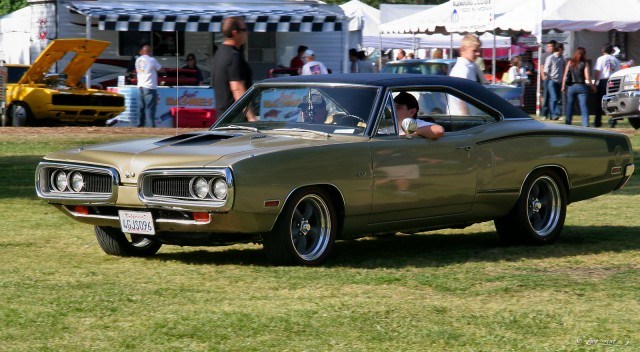
6. 1970 Super Bee
Do the words 440 & 6-pack mean anything to you? Here is a car that if you put your foot to the metal and floored it, you could actually watch the gas gauge drop to 0 by the time you reach the end of the block. That is why many owners had the trunk converted into an extra large gas tank when they took this ultra muscle car out of the road. Having ridden one in Northern California during the late 70s, it could turn eyes as well as generate tremendous roar of the crowd and cheers as you took it off the road and onto the track.
This car was considered one of the top end muscle cars of the 70s. Unfortunately rising gas costs and restrictions on street machines all but killed it and 1970 was the final year for this great track and road machine. It needs to come back to show this imports what American muscle can do!

7. The Silhouette
The silhouette, a winner at the Oakland roadster show tournament of fame and the NHRA winter nationals, was a futuristic concept car that sported a domed top and a dual chrome carburetor on top of a ford engine. Built around 1962 with a distinctive bubble top, probably due to the sci-fi movie craze of the time, this custom-designed one-of-a-kind car was only seen in one movie and the TV series called the “Thunderbirds.” It was supposed to represent the future of automotive engineering. As mentioned earlier, it was stolen and urban legend says it is buried somewhere in the Valley along with other stolen or stripped supercars and that it is still fully intact just waiting for rediscovery. So if you have a metal detector and a hankering to make automotive history, finding this car would be the equivalent of finding the “Lost Dutchman Mine.”
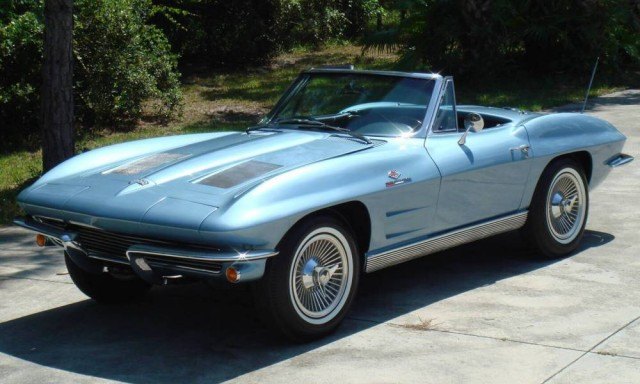
8. 1963 Corvette Convertible
Stingray Corvette came out in both cool and convertible designs. This was a man’s car both for performance and as a masculine enhancer to both the ego and libido. This is the 1st year that the coup came out with our top, which gave it the classic Corvette styling that we still know and love today. The main feature was a tapering rear deck that only lasted for this 1963 addition but was later resurrected in 1971 “Boattail” Buick Riviera, with its split rear window.
This is another car that could easily be updated to the 21st century and surpass the current models of the same car simply by switching to electric or hybrid technology as well as composite material design to lighten and bring it down to the affordable price of drivers everywhere.

9. 1960 Vette
The 1960 Corvette was the last year of the traditional body with a longer front end and quad headlamps. The 2nd generation that was to follow would have a smaller engine until 1962 where once again it was upgraded to a larger size. But many swear by this model for nostalgic reasons and it does have the classic look and feel that made a line of cars that lasts into the 21st century.
But it was a convertible model that got all the publicity as it became the premier car for the 60s Playboy to tool about the country in search of beautiful girls. It became a status symbol of men that seemed to say, “I’ve made it to the top and now I can enjoy myself.” The two-seat design made it the perfect chick magnet and even today, there are those who drop large chunks of change to get a 60 Corvette of their own just so they can tool about the city and look cool.
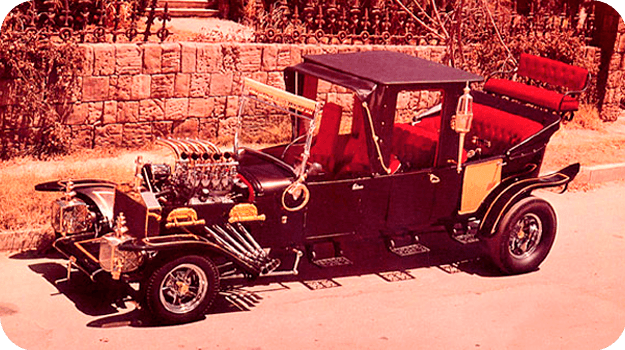
10. The Munster Koach
Back in the days when cars had to look cool and match the character of those driving it, the Munsters TV show created two iconic vehicles; the 1st we’ve already talked about, and the 2nd car seen in over 20 episodes of the classic Munsters TV series. With 10 carburetors, 10 air horns, and a supercharger that included air scoop this street rod, family transportation became an instant classic.
Based on the old model T it was over 18 feet long and made by hand along with the brass radiator and fenders. The custom paint job and the ornate scrollwork took over 500 hours to do and since then this car has been auctioned off to a private owner. In 2011, however, a new version was commissioned and this one has a skull radiator cap, which the original 1960s version did not. So you have a model T body and a 289 cu. in. Ford V-8 designed for a Cobra with a Hersey like body and red interior.
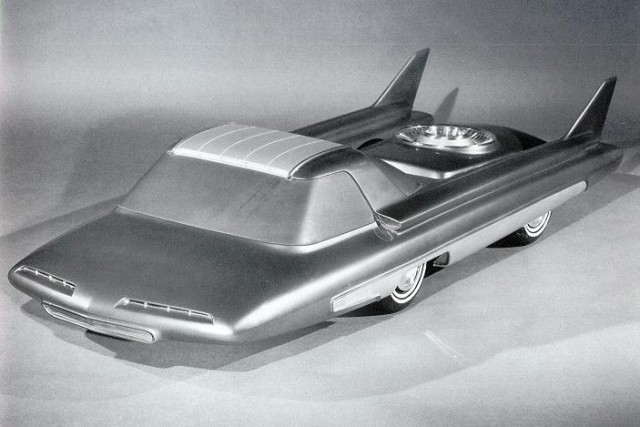
11. Ugly is Cool – Ford Nucleon
In 1958 Ford toyed about the concept car called Ford Nucleon and it was one of the ugliest cars imaginable. This car, however, had a resurgence in the 1960s in the TV show “Batman” where the Batmobile bore a striking resemblance to this futuristic nuclear-powered car of the future.
This car has gone on to achieve cult status and each time it comes up for sale there are always eager bidders wishing to own the black supercar. The 1966 Batmobile, though it does look like the nucleon, actually was derived from a Ford concept car called The Future, which cost over $250,000 to create. It was later sold for $1 to the man who ended up getting the contract for creating the Batmobile for the TV series.
The concept of a nuclear battery is still on the drawing boards. However, with the current environmental and green thought processes the word nuclear has taken a negative connotation. Perhaps Elon Musk, Tesla, and their new generation of high-powered and high-capacity batteries will take the design of the Batmobile and utilize it in a future variation of the highly successful electric car.
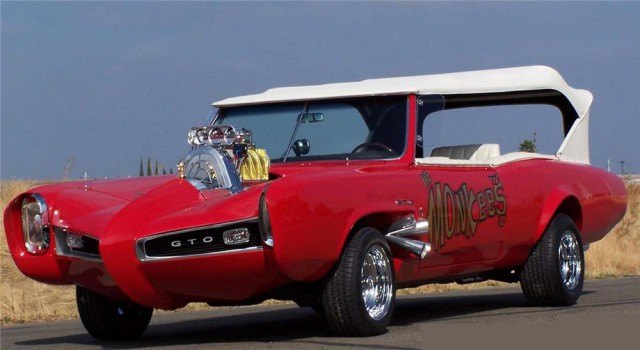
12. TV cars need Love too – The Monkee Mobile
The Monkee Mobile was a GOT that was modified for the TV show “The Monkees”, Which is a mostly forgotten show that predates MTV. In fact, Michael Nesmith of the show went onto become a nMTV music video producer. Believe it or not, over 7 million model kits of this car were sold though only two complete cars were constructed.
What makes this car unique is the detailing of the 383 engine and all the chrome that went inside to make it so flashy. The first version had a fully functional supercharger that provided way too much power and made the car unsuitable for the drivers to handle and so a dummy supercharger was substituted.
The car was later seen as Major Nelson’s ride in “I Dream of Jeannie.”
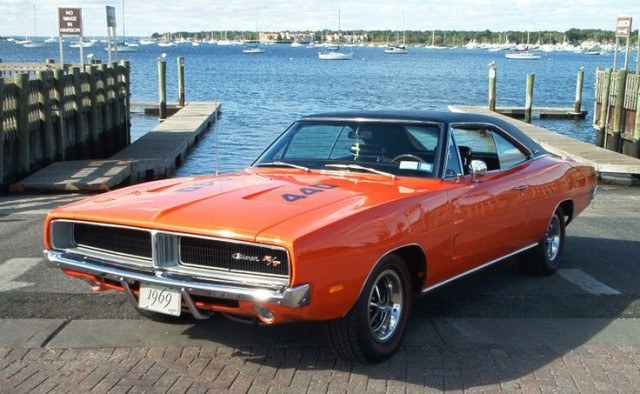
13. Mean Streets
The 1969 Dodge Charger magnum R/T 440 was the power car of the 60’s though its reign was short. However, the Dukes of Hazard kept the legend alive. It was seen to do miraculous feats in almost every episode. The series ate up the cars at a prodigious rate. Over 320 Chargers were consumed by the time the series ended, and no one was any wiser. (Until Now Of course.) Warner brothers had to resort to aerial recognizance to locate chargers to be acquired and then built to exact specifications for both the series stunts as well as the nit-picking fans who could tell at a glance if the General Lee wasn’t up to their standards.
They then started salvaging part from the damaged vehicles and used the parts to build the next iteration of general Lee. It got so bad in some of the final episodes radio controlled models were used in place of real cars.
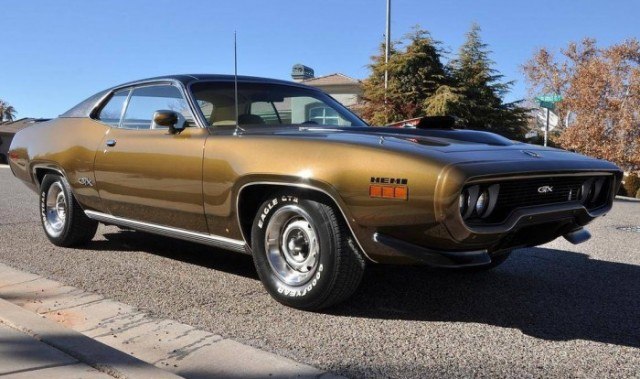
14. 1971 Plymouth GTX
Under the hood of this behemoth that went under a plethora names like Roadrunner and 15 other various models, was the massive 426 Cu. In. Hem and 425 horsepower beast of an engine. Sadly, only a handful of these were ever on the road. 33 were upgraded for the straight track and crowds thrilled to see them jet down the quarter mile.
The Hemi was tunable which meant after the race you could take it out on the streets and it didn’t have the tire spinning burnouts that lost power. It went from a standing stop to full bore smoothly and without loss of power. Here was a muscle car with real power and it was street legal to boot. The ‘71 was the last of the series and from then on, the Roadrunner was fitted with the features of the GTX.
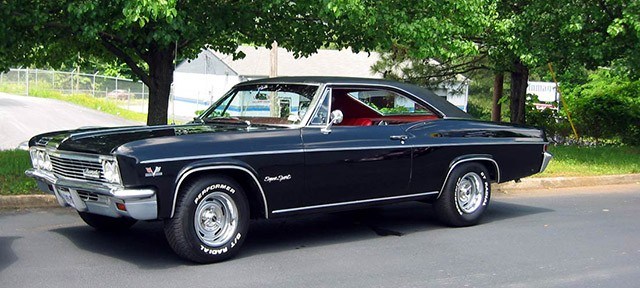
15. ’67 Impala Super sport
Just the name Impala brings to mind the green Celt of Africa and the life and death struggle to stay alive between the antelope of the plains and the Cheetah, Leopard and the Lion. Only by being agile and swift can they survive. That was the image that the people who designed the Impala strove for when they created this masterpiece of the breed. Now in a hardtop design, it was now able to attract the younger male drivers that were looking for a car to soup up and this was it. Even the Lowrider community got into the act and you can see them still cruising the Boulevard in LA.
12,124 of the 76,000 or so made with the RPOZ24 package, which gave you a Turbo-Jet 427 a 7-Liter V8 that could hold its own against all comers. However, the day of a full sized care was waning and the Mustang was becoming the king of the road and the Impala Super Sport faded from memory. But its classic lines and aluminum intake (Fake) still makes one thing of the heyday of the street machines that made boys into men on the streets of America.

16. Ford Cougar II
In 1963, a Cobra chassis was transformed into a concept car that had heads turning. The Cougar II was able to perform and with a 160 cu.i in. V-8, it was expected to be able to reach 170 miles an hour. This put it in competition with Ferrari and was the last of a series of X-cars that were showcased. Though it lacks the styling of the Cobra, it made up for it, as it was the most performance driven of the 3.
Today it could come off the assembly line with a more modest powertrain or a hybrid design and the styling would still beat out most of what you see from Japan, Chinese, and Korean carmakers. Add a composite body and you would have a car that would beat out the competition.

17. Corvette ZR-1
Here is a car that could hold its own on the road and on the track and could go head to head with the Viper. But like many of the muscle/beauty cars the price of upkeep and gas helped kill it and the price tag didn’t help much either. With the breakthroughs of the 3D printing of houses, cars, and add a computer to control it all, you have a recipe for a comeback as the car is already using carbon fiber design. Changing out the power plant to an all electric one would bring it down to be within the reach of the common man, as we are about to see, as the Nevada-based factory owned by Tesla comes online.
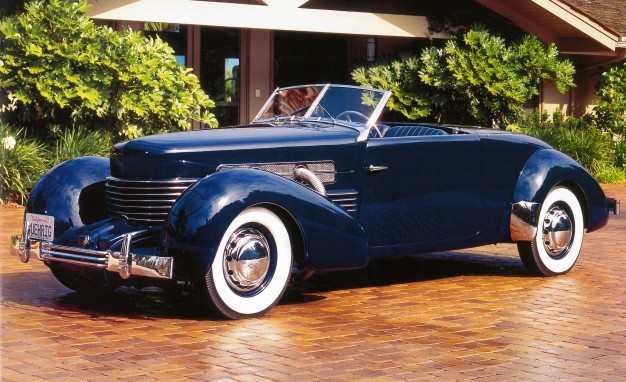
18. The Cord!
If you’ve ever been to the Cord Museum along route 90 on your way to Ohio you’ll see what we are talking about. This classic car should be brought back as it is just so decadently luxurious. The lines speak of sped and since some variants had 8 cylinders, there is a reason why it could hold its own with the best at the time.
You had grace, speed, and styling all in the same package. It was also competitively priced as well. This made it attractive over the Mormon and all the rest of the cars of the time. We could easily bring it back with an upgrade in the engine and change over to the new composites and it once again could be cruising down the highways and byways of America.

19. 1957 Ford Thunderbird
This was the icon of the leisure class in the 50s and its classic silhouette is in the minds still of anyone over the age of 40. This was the ultimate make out and drive-in vehicle as it had enough room for you, your girl, and another couple as well.
It came in a hard top or a convertible and let you go down the road with the top town and see America along Route 66. It, of course, was a pig when it came to gas mileage. But Tesla has solved that problem and their new generation electric engines and with the use of 3D printing, this bad mother could be back on the road again. This time made from composite fibers and carbon Nano-tubes that are as thin as spider silk and as strong as steel.
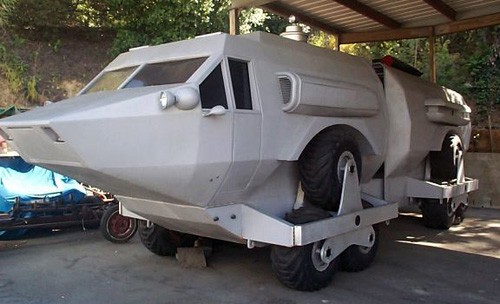
20. The 1976 Landmaster
Let’s face it, with all the zombie movies and apocalyptic programming in the theaters and the road rage out there you need a vehicle that can stand up to it all. Not to mention it’s amphibious. The Landmaster was a specially designed vehicle for the 1977 Movie, “Damnation Alley.” It was a fully functional Tri-wheeled Rollagon vehicle that could roll over obstacles and even go across a lake or river. What better vehicle for dealing with that logg jam on the toll road? You could just bypass the whole mess and continue on your way. Conversely, you could just drive over the top of the cars in front of you that are blocking you from your off ramp.

